Discover 25 hidden attractions, cool sights, and unusual things to do in Venezuela. Don't miss out on these must-see attractions: Angel Falls (Canaima National Park), Caricuao Zoo (Caracas) or Parque del Este (Caracas).
Below, you can find the list of the most amazing places you should visit in Venezuela.
Table of Contents
Angel Falls, Canaima National Park

Also known as: Salto Ángel
Highest waterfall in the world. Angel Falls is a waterfall in Venezuela. It is the world's tallest uninterrupted waterfall, with a height of 979 metres and a plunge of 807 m. The waterfall drops over the edge of the Auyán-tepui mountain in the Canaima National Park, a UNESCO World Heritage site in the Gran Sabana region of Bolívar State. The height figure, 979 m, mostly consists of the main plunge but also includes about 400 metres of sloped cascade and rapids below the drop and a 30-metre-high plunge downstream of the talus rapids.
The falls are along a fork of the Río Kerepacupai Merú which flows into the Churún River, a tributary of the Carrao River, itself a tributary of the Orinoco River.[1]
Caricuao Zoo, Caracas
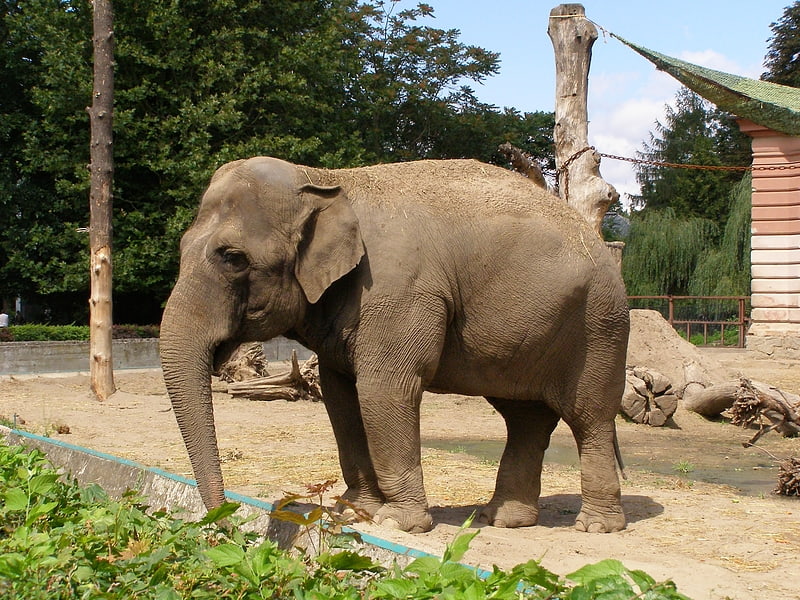
Zoo in Caracas, Venezuela. Parque Zoológico Caricuao is a zoo in Caracas, Venezuela in the Parish of Caricuao located in the southwest region of the city. The park was created by Decree No. 1682, dated March 7, 1974, but only open to the public from July 31, 1977.
Caricuao Zoo occupies a total area of 630 hectares, of which 594 ha are for the protection of natural fauna and flora and preservation of the park's watershed. The other 36 ha have been developed into a zoological park showcasing seven specific environments.
As a result of the crisis in Venezuela, as of July 2017, the Caricuao Zoo was in severe decline. Budget cuts led to shortage of staff and animal feed, which in turn led to neglect and malnourishment. Many of the animals have died or were stolen. The zoo is down to 150 animals from the 700 housed in 2006. Attendance has also dropped due to lack of security and increase in robberies.[2]
Address: Av. Principal de la Hacienda, Caracas
Parque del Este, Caracas
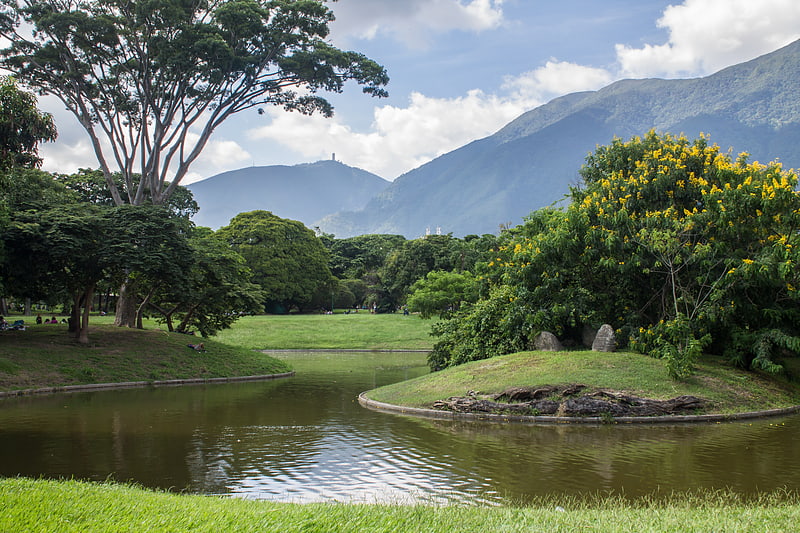
Also known as: Parque Generalísimo Francisco de Miranda
Large urban retreat with a zoo and library. Parque del Este, renamed as officially Generalissimo Francisco de Miranda Park by chavez, in honor of the Venezuelan national hero, is a public recreation park located in the Sucre Municipality of Metropolitan Caracas in Venezuela. Opened in 1961, it is one of the most important of the city, with an area of 82 hectares. The park was designed by Roberto Burle Marx and associates Fernando Tabora and John Stoddart.
The park is located just outside the station Miranda (formerly East Park) Line 1 of the Caracas Metro. East Park is managed and supervised by the National Parks Institute (INPARQUES), an agency under the Ministry of Popular Power for the Environment.
The park combines three differently designed areas: the first is an open grass field with a gentle undulating topography, the second is a densely forested landscape with meandering pathways, while the third is a series of paved gardens with tiled murals and water works.[3]
Address: Av. Francisco de Miranda, Caracas
Palacio Federal Legislativo, Caracas

Building in Caracas, Venezuela. The Palacio Federal Legislativo, also known as the Capitolio, is a historic building in Caracas, Venezuela which houses both the National Assembly and the National Constituent Assembly. Located southeast of the Plaza Bolívar, it was built between 1872 and 1877 by President Antonio Guzmán Blanco to a design by the architect Luciano Urdaneta Vargas. The Salón Elíptico, opened in 1877, is topped by a golden dome.[4]
Address: Av. Sur 4, Caracas
Museo Aeronautico, Maracay
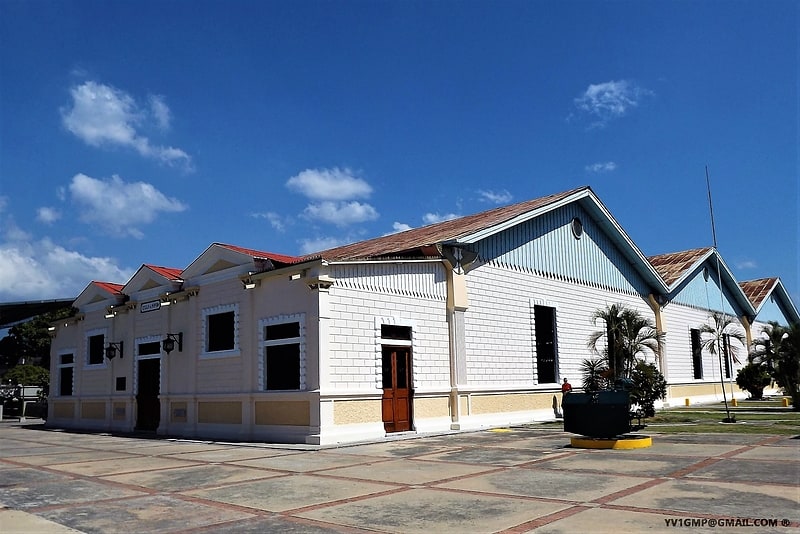
Also known as: Museo Aeronáutico de Maracay
Museum in Maracay, Venezuela. Venezuelan Air Force's Museo Aeronáutico de Maracay is a historical aviation museum of military and civic aeronautic technology inaugurated on 10 December 1963 and located at the installations of the former Aeropuerto Nacional Florencio Gómez adjacent to the Venezuelan Air Force officer graduation school, and the "Cradle of Venezuelan Military Aviation" in the City of Maracay, Estado Aragua, Venezuela.
The museum is the only one of its kind in Venezuela and the largest collector and restorator of aircraft, engines, weapons, documents, photographs, maps, paintings, memorabilia and other items of historical value. The aviation museum in Maracay is one of the largest in Latin America, with over 40 aircraft on display.[5]
Address: Avenida Santos Michelena, 2101 Maracay
Kukenán-tepui, Canaima National Park
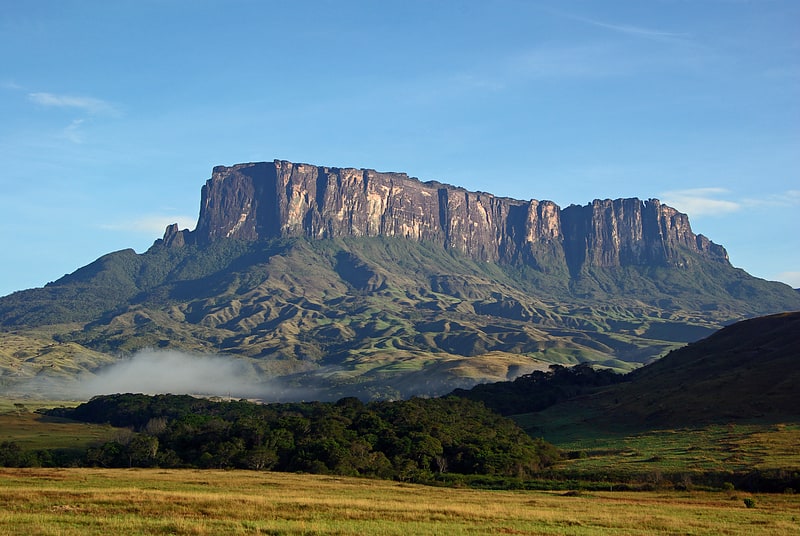
Also known as: Tepuy Kukenán
Kukenán, also known as Matawi or Cuquenán, is a tepui in Bolívar State, Guyana Region, Venezuela. It has an estimated surface area of 2185 hectares. It is 2,680 metres high and about 3 km long. Kukenan Falls, which is 674 m high, is located at the south end of the tepui.
Kukenán is located in Canaima National Park. Next to Kukenán, to the southeast, is Mount Roraima, a better known tepui. Kukenán is more difficult to climb, so it is ascended much less frequently than Mount Roraima.
Canaima National Park is also home to the highest waterfall in the world, which is located in Auyán Tepui.
Scenery on top of Kukenán provided inspiration for the 2009 film Up.[6]
Los Aleros, Mérida
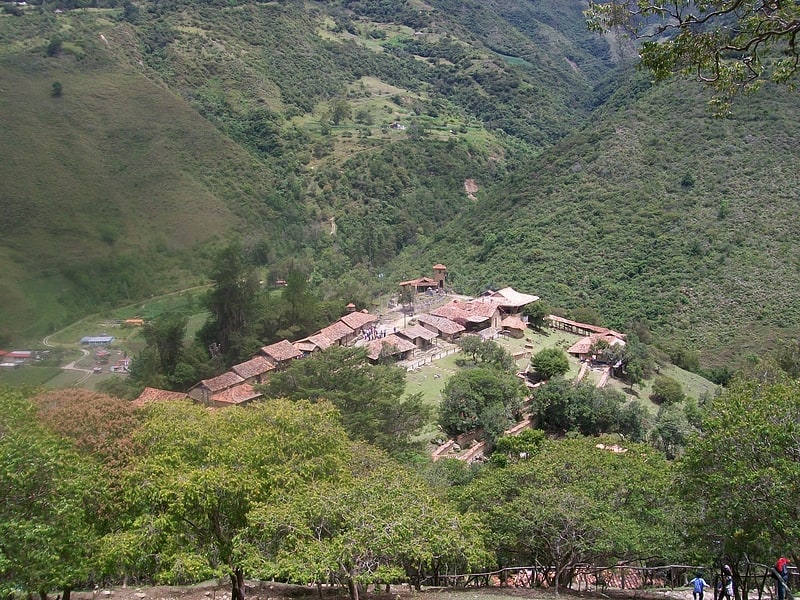
Theme park in Venezuela. Los Aleros is a theme park located near Mérida, Venezuela. It depicts a typical Andean town in the 1930s. It was created by Alexis Montilla in 1984; he subsequently created the nearby "Venezuela de Antier" and "Montaña de los Sueños" themeparks.[7]
Gran Sabana, Canaima National Park
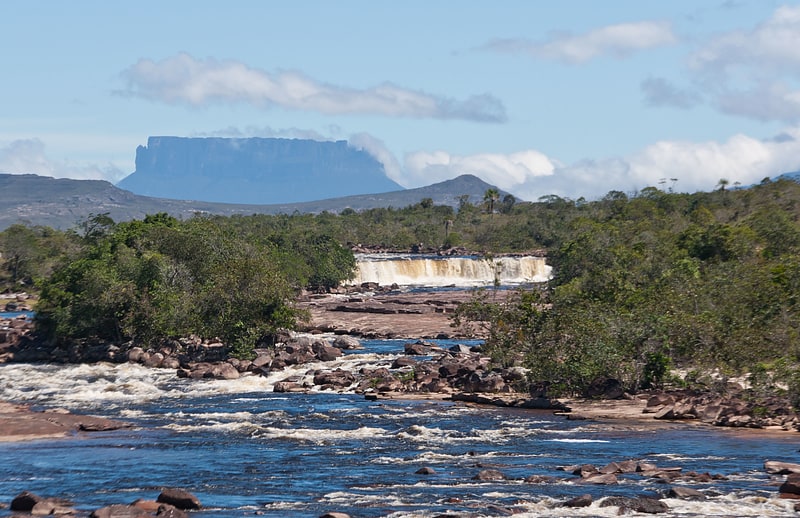
Region in Venezuela. La Gran Sabana is a region in southeastern Venezuela, part of the Guianan savanna ecoregion.
The savanna spreads into the regions of the Guiana Highlands and south-east into Bolívar State, extending further to the borders with Brazil and Guyana. The Gran Sabana has an area of 10,820 km2 (4,180 sq mi) and is part of the second largest National Park in Venezuela, the Canaima National Park. Only Parima Tapirapecó National Park is larger than Canaima. The average temperature is around 20 °C (68 °F), but at night can drop to 13 °C (55 °F) and in some of the more elevated sites, depending on weather, may drop a bit more.
The location offers one of the most unusual landscapes in the world, with rivers, waterfalls and gorges, deep and vast valleys, impenetrable jungles and savannahs that host large numbers and varieties of plant species, a diverse fauna and the isolated table-top mesas locally known as tepuis.[8]
Pico Bolívar, Mérida

Mountain in Venezuela. Pico Bolívar is the highest mountain in Venezuela, at 4,978 metres. Located in Mérida State, its top is permanently covered with névé snow and three small glaciers. It can be reached only by walking; the Mérida cable car, which was the highest and longest cable car in the world when it was built, only reaches Pico Espejo. From there it is possible to climb to Pico Bolívar. The peak is named after the Venezuelan independence hero Simón Bolívar.
The Pico Bolívar is located on the mountain previously called La Columna, next to El León (4,743 m) and El Toro (4,695 m). The new name was suggested by Tulio Febres Cordero in 1925. It was officially renamed on December 30, 1934.[9]
Luxburg-Carolath Cemetery, Maracaibo
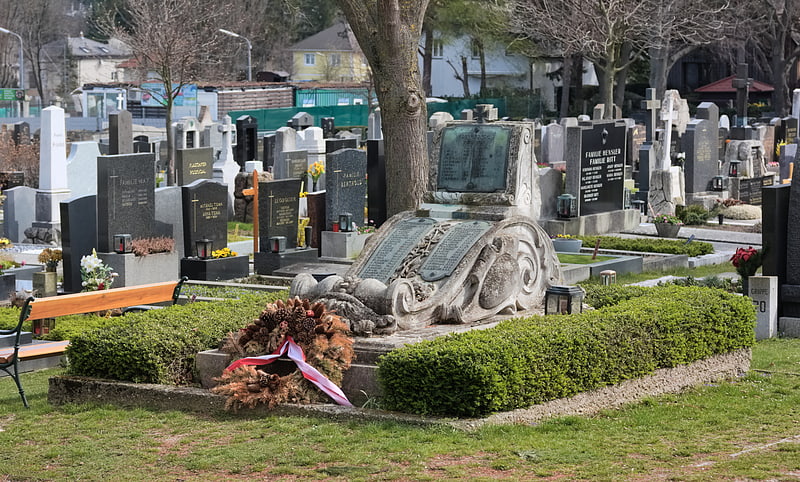
The Luxburg-Carolath Cemetery, commonly known as El Cuadrado is a privately owned cemetery located in Maracaibo, Zulia, Venezuela. It is one of the oldest operating cemeteries in the country, and has over 10,000 interments.[10]
Basilica of Our Lady of Chiquinquirá, Maracaibo
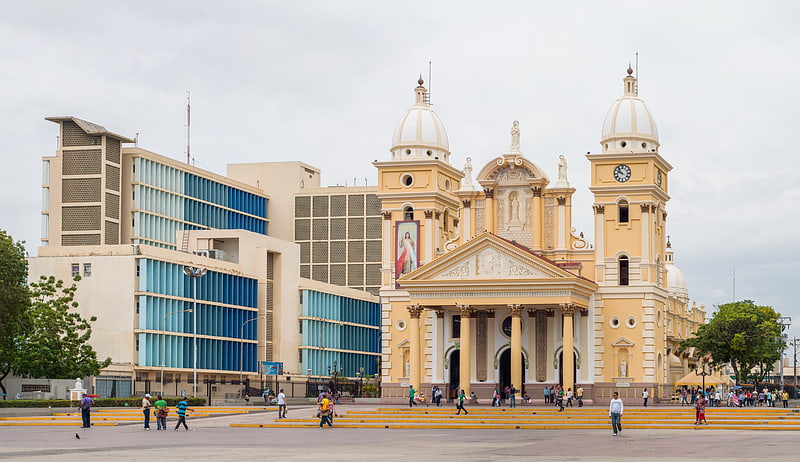
Also known as: Basílica de Nuestra Señora de Chiquinquirá
Church in Maracaibo, Venezuela. La Chiquinquirá Church is a church in Maracaibo, Venezuela. The feast day of the church is November 18. Annually on this day many thousands of people gather around the church.[11]
Bararida Zoological and Botanical Park, Barquisimeto
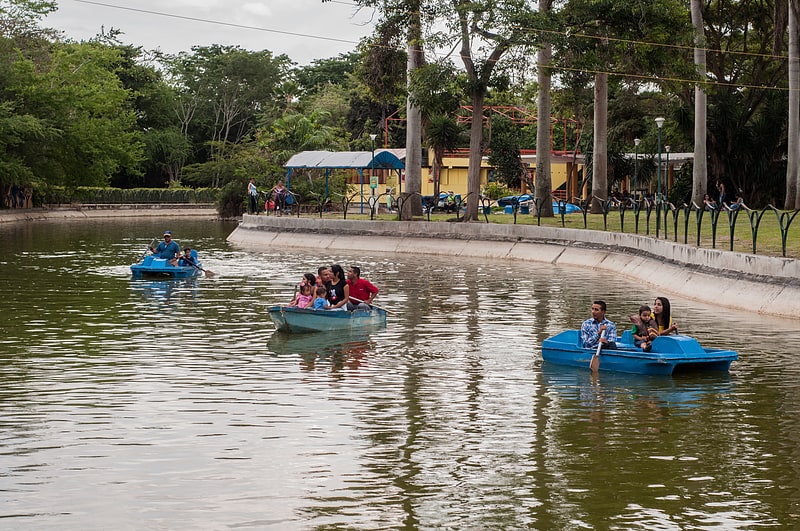
Also known as: Parque Zoológico y Botánico Bararida
Zoo in Barquisimeto, Venezuela. The Bararida Zoological and Botanical Park Also Bararida Zoo Is a park, zoo and botanical garden that is located in the city of Barquisimeto, the capital of Lara State, in the South American country of Venezuela.
It is a national reference zoo with a staff of 210 workers. It operates as a Decentralized Service attached to the Lara State Government.
It is subscribed to the Venezuelan Association of Zoological Parks and Aquariums (AVPZA) which is a member of the Latin American Association of Zoological Parks and Aquariums (ALPZA). He is registered in the Ministry of the Popular Power for the Environment (MPPAmb) before the National Foundation of Zoological Parks and Aquariums of Venezuela (FUNPZA) under the number ZOO-AC-V011.
In the park there is an important collection of native trees from the country and abroad, also a collection of approximately 8,222 animals (388 mammals, 265 birds, 1269 reptiles, 20 amphibians, 1 Arthropod and 6279 fish), where 65% of them Are in danger of extinction. In addition, approximately 150 different species of plants are exhibited in the park.[12]
Address: Av. Los Abogados, 3001 Barquisimeto
Las Delicias Zoo, Maracay
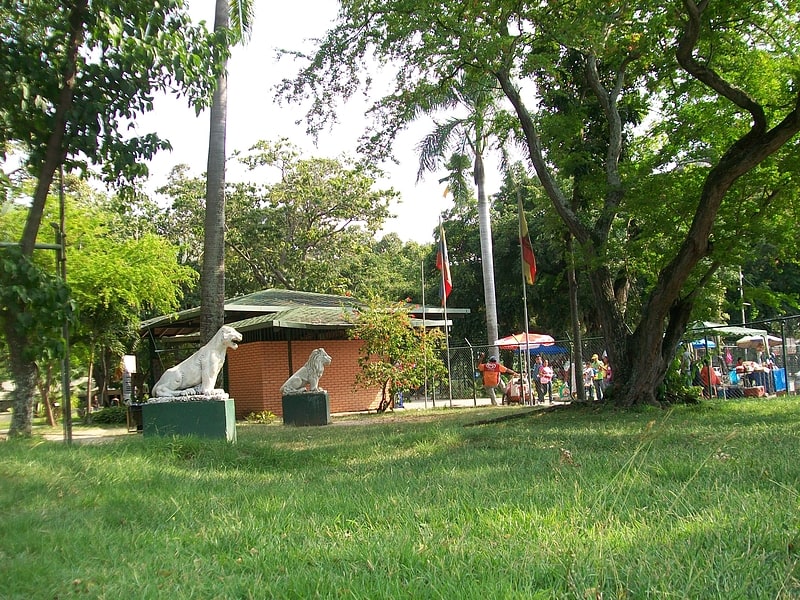
Also known as: Parque Zoológico Las Delicias
Zoo. The Las Delicias Zoo Also Zoological Park of Las Delicias Is an urban zoological garden located at 400 meters above sea level in the northern end of the city of Maracay, Aragua State in Venezuela with native species from the Cordillera region and the rest of Venezuela. The zoo operates under Declaration No. 655 published in Official Gazette No. 32007 of June 17, 1980.
The Ministry of the Environment maintains the rectory of the Maracay Zoo and the Aragua State Government assumes some administrative responsibility to support the programs that are developed in the park. The zoo is a historical continuation of a hacienda in the eastern slope of Cola de Caballo Mountains.
The zoo of Maracay opened for the first time in 1915 at the initiative of General Juan Vicente Gómez as a corral with a personal exhibition of many animals presented at Las Delicias hacienda, owned by the president. Then, native animals such as chigüire, Water, corocoras, gabanes, garzones soldiers and alligators.
In 1928 the collection was enriched with specimens requested from the Hamburg Zoo and other places such as Bengal, Elephant, Giraffe, Orangutan, Chimpanzee and African Lions. Gómez died in his house inside the zoo grounds in December 1935. The zoo was officially inaugurated in 1952 by the then president of Venezuela Marcos Pérez Jiménez.[13]
Address: Avenida las delicias (el toro), Maracay
Llovizna Falls, Ciudad Guayana
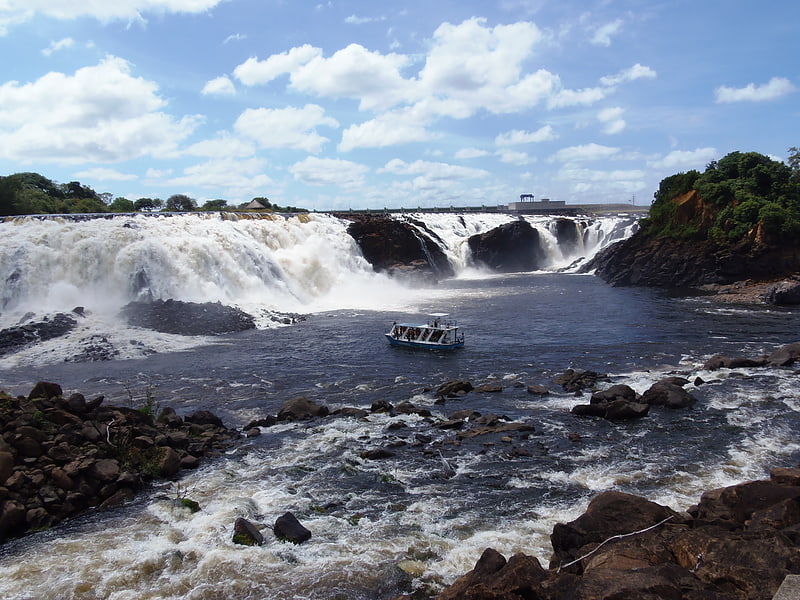
Also known as: Salto la Llovizna
Waterfall in Venezuela. Llovizna Falls is a waterfall on the Caroní River, close to its confluence with the Orinoco, are located in the Llovizna Park, Puerto Ordaz, Venezuela. The nearby Macagua Dam has reduced the flow over the waterfall in recent years, but the cascade continues to be spectacular and returns to its former glory several times a year when the floodgates of the dam are opened.
(Llovizna - "yoviz-nah", is Spanish for mist, drizzle, spray).[14]
St. Peter and St. Paul Cathedral, Maracaibo

Also known as: Catedral de San Pedro y San Pablo
Catholic church in Maracaibo, Venezuela. The St. Peter and St. Paul Cathedral or just Maracaibo Cathedral is the main church of Maracaibo in the Zulia state of Venezuela. It was built in the seventeenth century. Pope Leo XIII designated it as a cathedral on 25 July 1897 and together with the Archbishop's Palace, is the seat of the Roman Catholic Archdiocese of Maracaibo.
It is located in the Bolivar Square, the historic heart of the city of Maracaibo, and is the headquarters of all churches in the Archdiocese and a repository of its history and traditions. The style is neoclassical colonial, unique to the city, with few such buildings existing within Latin America. It was constructed between 1585 and 1650.[15]
Address: Avenida 4, 4001 Maracaibo
Pico Humboldt, Mérida

Peak in Venezuela. Pico Humboldt is Venezuela's second highest peak, at 4,940 metres above sea level. It is located in the Sierra Nevada de Merida, in the Venezuelan Andes of. The peak, its sister peak Pico Bonpland, and the surrounding páramos are protected by the Sierra Nevada National Park. The mountain is named after German explorer and naturalist Alexander von Humboldt.[16]
Cathedral Basilica of Our Lady of Help, Valencia
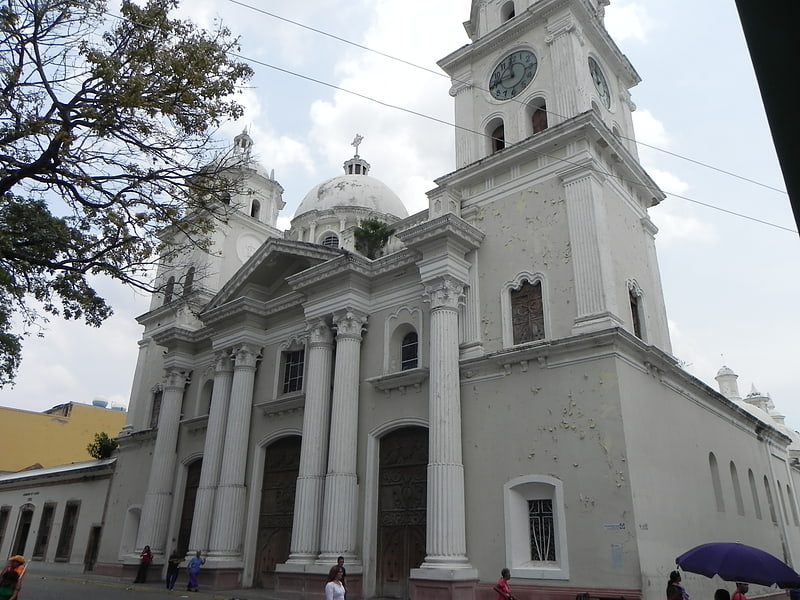
Basilica in Valencia, Venezuela. The Cathedral Basilica of Our Lady of Help or the Cathedral of Valencia is the most important religious site in Valencia, Venezuela. It is situated in the center of the city opposite the Plaza Bolivar.
Considered a National Historic Landmark, it is the official headquarters for the veneration of the Our Lady of Sorrows under the localized title of "Virgin of Help", which annually receives thousands of parishioners who attend devoutly to pay homage to the patron saint of Valencia.[17]
Polideportivo Cachamay, Ciudad Guayana
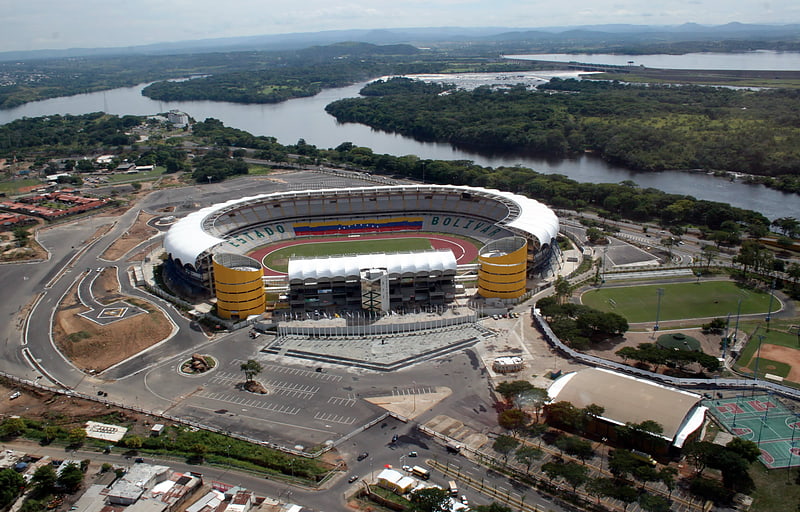
Also known as: Estadio Cachamay
Stadium in Ciudad Guayana, Venezuela. The Estadio Cachamay is part of the Centro Total de Entretenimiento Cachamay. It is a multipurpose stadium located on Avenida Guayana in Puerto Ordaz Bolivar State, Venezuela. The old stadium was opened in 1990 and subjected to an expansion, modernization and remodeling over the years 2006–2007, which involved the demolition of some parts and redesign of its structure to point to double its capacity before 2006, being one of the 9 host stadiums of the 2007 Copa América, when it reopened as Cachamay CTE. It is set in grounds with beautiful natural landscapes, surrounded by the mighty river Caroni and waterfalls Cachamay Park. The sports center is managed by the Cachamay Foundation, with home court advantage for soccer teams AC Mineros de Guayana and AC Minervén FC Bolivar. The CTE is known popularly as Cachamay Cachamay Stadium.[18]
Address: Pto Ordaz, 8050 Puerto Ordaz
Cagua, Maracay
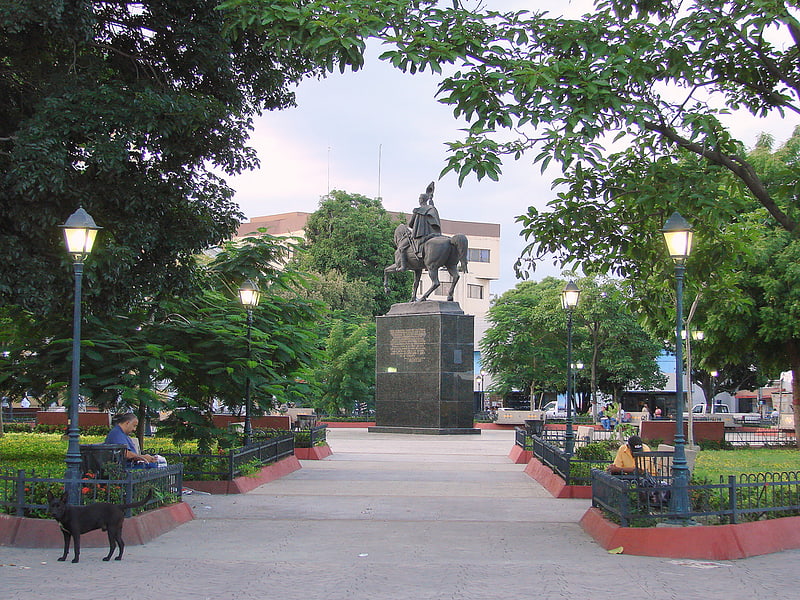
Cagua is a city of Venezuela, capital of the Sucre Municipality of Aragua State. Cagua is part of the metropolitan area of Maracay.[19]
Valencia's Aquarium, Valencia
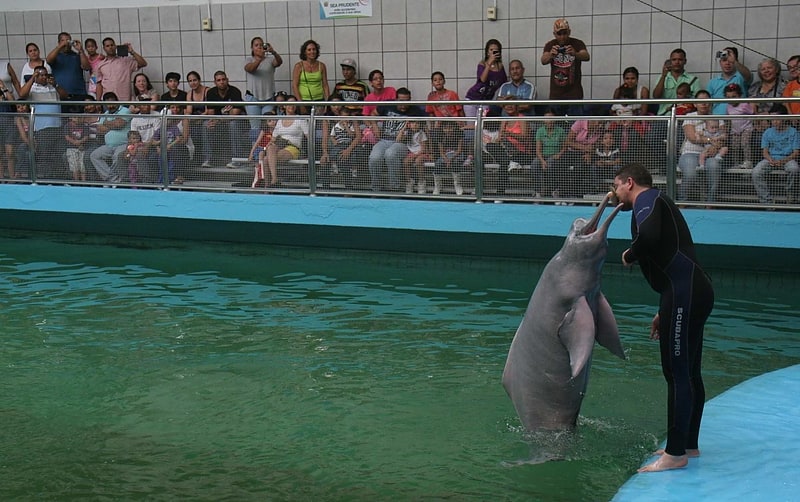
Also known as: Aquarium de Valencia
Sizable zoo with dolphin shows and birds. Valencia's Aquarium is a recreational park located in Valencia, Venezuela. It is the largest aquarium in Venezuela, and it also has a small zoo with species from Venezuela. It is operated by the J.V. Seijas Foundation.
This aquarium has the only trained captive Amazon river dolphins in the world. It also has many species of fish, snakes and other animals as well as plants endemic to Venezuela.
There is also a small park for children, with bumper cars, a carousel and other games.[20]
Ciudad Comercial Ciudad Las Trinitarias, Barquisimeto

Shopping, Shopping centre, Art gallery
Address: Avenida Los Leones, 3001 Barquisimeto
Basilica of Our Lady of Consolation, San Cristóbal

The Basilica of Our Lady of Consolation also Basilica of Táriba is a Catholic temple located in the locality of Táriba in the Táchira state in the Andes of the South American country of Venezuela. It gained the title of basilica via Pontifical decree in 20 October 1959.
The Basilica enshrines a venerated Marian image granted a Pontifical decree of coronation in 9 November 1959 by Pope John XXIII. The coronation was executed in 12 March 1967.
Its history goes back to the emirta built in the early times by the Augustinians who required to become a temple of hierarchy and dimensions sufficient to be at the service of a growing parishioners and to the pilgrims, being the priest Francisco Martínez de Espinoza, cura and vicar of the Villa of San Cristóbal, who began the construction of the first temple dedicated to the Virgin of Táriba, 19 August 1690 that later would be also replaced.
The present temple is dedicated to the Lady of the Consolation, patron of the state Táchira. Obtained from the Pope John XXIII the title of basilica menor, as a work of Monsignor Miguel Ignacio Briceño Picón and thanks to the efforts made by Monsignor Alejandro Fernández Feo during the period of 1904 and 1913, and remodeled under the administration of Monsignor Alejandro Figueroa Medina, Because those days approached the canonical coronation of the virgin.
The basilica was critically rebuilt in the 1960s thanks to the contribution of Martín Marciales Moncada.[21]
Cathedral of Our Lady of Mount Carmel, Barquisimeto
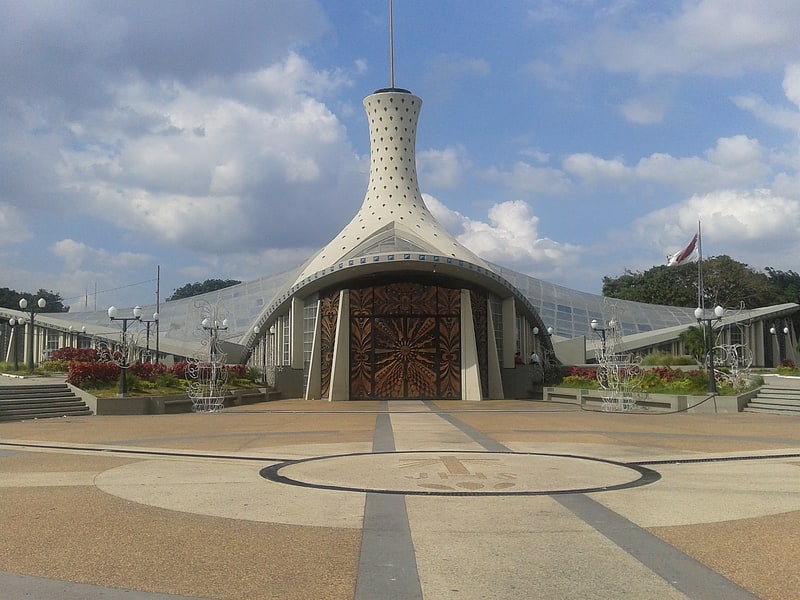
Also known as: Catedral de Nuestra Señora del Carmen
Cathedral in Barquisimeto, Venezuela. Barquisimeto Cathedral is a Roman Catholic cathedral in Barquisimeto, Venezuela. It is one of the most modern cathedrals in Latin America, considered original in style. Designed by Jan Bergkamp, it was his first major project. Its exterior shape is an upside down flower, with a bell tower external to the building. It is located on Avenida Venezuela between Avenida Simón Rodríguez and Calle 30. Considered to be advanced engineering for its time, it was completed in 1968. This unconventionally-shaped cathedral is a hyperbolic paraboloid with two wings connected by a central tower. It required extensive structural precision. The cathedral ceiling consists of acrylic panels supported by a network of steel wires.[22]
Address: Av. Venezuela, 3001 Barquisimeto
Ilú–Tramen Massif, Formaciones de Tepuyes Natural Monument
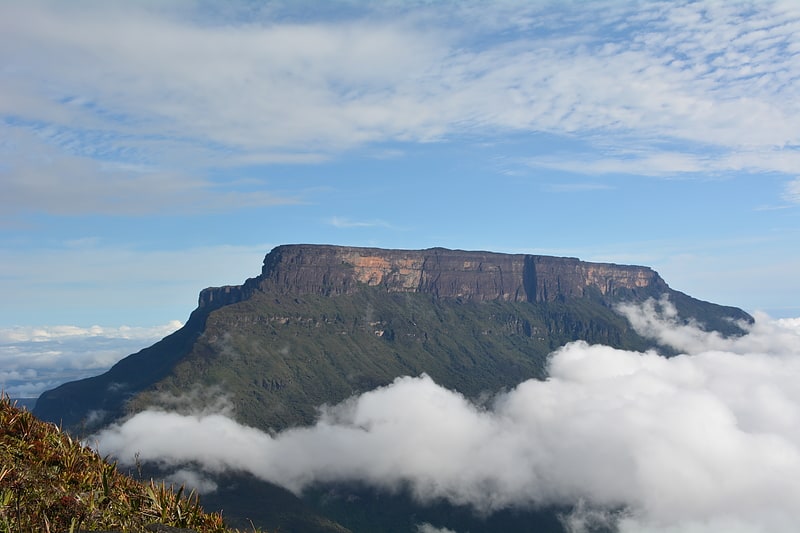
Also known as: Tramen Tepui
Massif in Venezuela. The Ilú–Tramen Massif is a tepui massif in Bolívar state, Venezuela. It is the northernmost member of the Eastern Tepuis chain and comprises two major plateaus: the larger Ilú-tepui to the south and Tramen-tepui to the north. With a maximum elevation of around 2,700 metres, Ilú-tepui is the taller of the two peaks. Both tepuis have open, rocky summit plateaus, with a combined summit area of 5.63 km2. They lie just north of Karaurín-tepui.
Tramen-tepui, the left most tepuy in the photo below, was first climbed by Scharlie Wraight and Stephen Platt from the col between Ilú-tepui and Tramen-tepui on 24 November 1981.[23]
Karaurín-tepui, Formaciones de Tepuyes Natural Monument
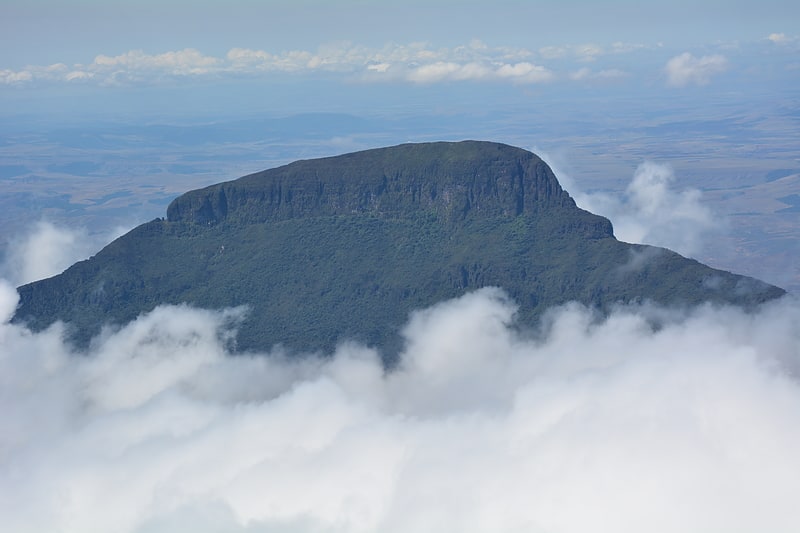
Summit in Venezuela. Karaurín-tepui, also spelled Caraurín, is a tepui of the Eastern Tepuis chain in Bolívar state, Venezuela. It has a maximum elevation of around 2,500 metres above sea level. The summit plateau is covered by shrubby vegetation and has an area of 1.88 km2. The foothills of the tepui are covered in forests. Karaurín-tepui lies just south of the much larger Ilú–Tramen Massif.[24]